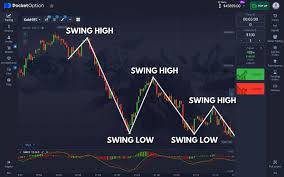
Pocket Option vs Olymp Trade: Uncovering the Best Trading Platform for You
As the online trading world continues to expand, traders are increasingly seeking platforms that best meet their individual needs. Among the numerous available options, Pocket Option and Olymp Trade stand out as two popular choices. This article will provide an in-depth analysis of these platforms—focusing on their unique features, benefits, and drawbacks. Whether you’re an experienced trader or just getting started, this comparative guide will help you choose the best platform for your trading journey. If you are already convinced, you can pocket option vs olymp trade login Pocket Option and start trading right away.
Overview of Pocket Option
Pocket Option is a relatively new player in the online trading industry, having been established in 2017. It is known for its user-friendly interface and innovative trading features. The platform allows users to trade a broad range of assets, including forex, commodities, stocks, and cryptocurrencies. Pocket Option focuses primarily on binary options trading, which has attracted a diverse range of traders due to its potential for high returns in a short period.
Overview of Olymp Trade
Founded in 2014, Olymp Trade is a well-established trading platform headquartered in Saint Vincent and the Grenadines. It caters to both beginner and experienced traders by offering a user-friendly interface and comprehensive educational resources. Olymp Trade also provides various trading instruments, including forex, commodities, stocks, and cryptocurrencies, with a strong emphasis on forex trading. The platform has garnered a good reputation for its reliability and customer service.
Comparing Features
User Interface and Experience

Both platforms prioritize user experience, yet they offer different aesthetics and functionalities. Pocket Option features a modern interface with customizable charts and a responsive design that allows for smooth navigation. Furthermore, it provides advanced analytical tools and indicators, making it appealing to traders who wish to conduct technical analysis.
On the other hand, Olymp Trade boasts a clean and intuitive interface, making it easy for beginners to navigate. The platform also provides educational materials that help users understand the basics of trading. Olymp Trade’s demo account feature is particularly praised, as it allows new users to trade virtual funds while gaining practical experience before using real money.
Assets and Trading Instruments
When it comes to the variety of assets, both Pocket Option and Olymp Trade excel in offering numerous options. Pocket Option allows users to trade over 100 assets across various categories, enabling traders to diversify their portfolio easily. This extensive range includes popular currency pairs, commodities, indices, and cryptocurrencies.
Conversely, Olymp Trade focuses mainly on forex trading, with around 70 assets available. While this may seem limited compared to Pocket Option, it still offers a good selection of currency pairs and some commodities. It is worth noting that Olymp Trade’s strength lies in its educational resources, particularly in forex trading strategies, making it a preferred choice for forex enthusiasts.
Minimum Deposit and Withdrawal Options
Pocket Option requires a minimum deposit of just $50, which is accessible for many traders. The platform offers multiple payment methods, including credit/debit cards, e-wallets, and cryptocurrencies for deposits and withdrawals. This flexibility allows users to choose a method that suits their needs best.
In contrast, Olymp Trade has a higher minimum deposit requirement of $10, which is relatively low for traders entering the market. The platform also supports a variety of withdrawal methods, ensuring users can access their funds conveniently. However, some traders have reported delays in the withdrawal process, which could be a consideration for potential users.
Trading Options and Leverage

Pocket Option provides users with various trading options, including standard binary options, higher/lower options, and digital options. The platform’s leverage ratio can reach up to 1:100, which allows traders to amplify their positions. This factor can lead to significant profits but also presents higher risks.
Olymp Trade, however, offers Forex trading and has a leverage ratio of up to 1:200. This higher leverage may attract more experienced traders seeking to maximize their trading opportunities. Olymp Trade also includes features like fixed return trading, which set it apart as it allows traders to know their potential profits upfront.
Customer Support
Effective customer support is crucial for traders, especially when encountering issues or needing assistance. Pocket Option offers various support channels, including email, live chat, and a dedicated support ticket system. However, some users have reported longer response times, particularly during peak trading hours.
In contrast, Olymp Trade is known for its excellent customer service, providing assistance through email, live chat, and phone support. Many users appreciate the promptness and helpfulness of the Olymp Trade support team, which enhances the overall trading experience on the platform.
Conclusion: Which Platform is Right for You?
Ultimately, the choice between Pocket Option and Olymp Trade will depend on individual trading preferences and goals. If you are looking for a platform with a modern interface, a wide range of trading instruments, and innovative tools, Pocket Option may be a better fit. It is also an attractive option for those interested in binary options trading.
On the other hand, if you are a beginner or primarily focused on forex trading, Olymp Trade’s user-friendly platform and robust educational resources could enhance your trading journey. The excellent customer support and educational materials make it suitable for those who seek to develop their skills and strategies in a supportive environment.
No matter your choice, both Pocket Option and Olymp Trade offer unique features that cater to different trading styles. It is important to consider your trading goals, risk tolerance, and preferences as you make your decision. Remember to start with a demo account if possible, allowing you to practice and become familiar with the platform before committing real funds.
